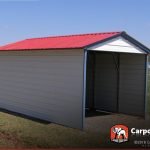Garden room insulation is the only best way of creating comfort in outdoor space during winter and summer as it keeps the house cool and warm all year round. In the first place, to achieve maximum insulation, using the right materials is key and also insulating floors, walls, doors and windows. Before ordering the material for insulation, it is important to plan.
To start with, measure the size of the timbers to ascertain that the selected material will be enough to fit into them. According to designers, the appropriate depth that is supposed to be insulated should be at least 100mm. Note, for insulation to work effectively, fresh air must have the ventilation to move freely. The air gap allows walls to breathe and prevents moisture from entering the garden room. On the other hand, insulation costs depending on the size of the structure. For instance, a garden room that has an insulated garden office and other rooms will cost higher than one that has a single room. The following procedure highlights what to do to achieve fully insulated garden rooms.
Additionally, the insulation of the floor is done in two main ways. First is creating a reinforced concrete foundation that is strong hence making it weather resistance. This is achieved by pouring a larger amount of concrete on the ground that creates a stable floor than an average slab. Alternatively, installing a wooden subfloor with water moisture resistant materials will protect the floor from absorbing water, enhance air circulation and maintain friendly temperatures as required. In addition, insulated garden rooms must have airtight walls that are waterproof. This can be made by attaching a layer of spray on the walls that make the barrier and when they insulate the electrical wires and plumbing system thus creating a moisture barrier.
Furthermore, walls can be insulated by applying foam insulation that fits in all the gaps. Cut the insulation foam to size with each section from your 2.4m x 1.2m. This will make 2 parts one for internal and other external installation. Thereafter, Slot the two parts into place to fill the gap between walls on each side. Moreover, having insulated garden rooms will help to keep the roof warm during winter. In regions with a cold climate part, it is recommendable to use a larger Fiberglass with R3.8 per inch. Also for small garden rooms, the use of cellulose can also be applied to protect the roof from absorbing moisture. As a result, all the gaps within the roof are insulated while ensuring appropriate ventilation.
Also, baffles are used to keep moderate airflow within the garden rooms where they are covered with the addition of cellulose or batt. Fill all the space that is in the rafters to ensure you have achieved at least 10 inches of insulation.
Besides, windows and doors also require insulation because they have a bigger entry space for moisture. But before insulation, checks should be made on them to ascertain there are no cracks on the doors, windows, frames, or any other opening. If they have occurred, they should be sealed tightly. Consider using waterproof caulking on the big opening. Furthermore, the use of insulated clad doors will establish a strong barrier preventing the leakage of moisture.
Therefore, having insulated garden rooms provides many benefits. This is because insulation reduces heat during summer while in winter it maintains heat inside. Insulation prevents the entry of moisture or water, excess heat and some materials can also block noise. As a result, the floor, roof, windows and doors need to be insulated in order to acquire optimum results.









I am so grateful for your blog post. Much thanks again. Great. Perle Maxie Yatzeck